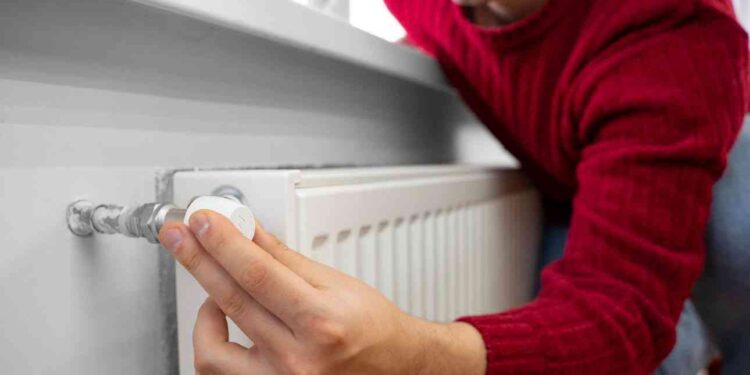As temperatures drop and the chill of autumn creeps in, the instinct to crank up the thermostat kicks in. But what if we told you there are smart, energy-saving alternatives to keep cozy? For seniors, families, and anyone trying to cut back on heating bills or lessen their carbon footprint, learning how to stay warm without turning up the heat is not just practical—it’s empowering. This post offers simple, proven strategies for staying snug without relying heavily on your radiator.
Why the Cold Hits Harder as We Age
As we grow older, our bodies naturally lose some of their ability to regulate temperature. Circulation slows, muscle mass decreases, and our skin thins. All of these factors contribute to a heightened sensitivity to cold. This means that even moderately chilly indoor environments can feel downright freezing to older adults. So when we explore how to stay warm without turning up the heat, it’s about more than comfort—it’s about safety, health, and maintaining quality of life.
The Science of Staying Warm
Before diving into tactics, it helps to understand a bit of the science that heat rises, which means that warm air tends to gather near the ceiling while cooler air stays at floor level. Understanding this dynamic helps us make smarter decisions on where and how to trap warmth.
Dress Smart, Not Just Warm
Wearing layers is the golden rule of staying warm. But layering doesn’t just mean piling on sweaters. The trick is in choosing materials and layering in a way that traps body heat efficiently:
- Base layer: Moisture-wicking materials like merino wool or synthetic fabrics.
- Mid layer: Fleece or down to insulate.
- Outer layer: Wind-resistant fabric if you’re stepping outside.
Don’t forget wool socks, gloves, and a beanie or knit cap—yes, even indoors. These simple accessories are an essential part of how to stay warm without turning up the heat.
Make Your Home Work for You
Your home can help you fight the cold without touching the thermostat. Here’s how:
1. Block the Drafts
Cold air sneaks in through gaps under doors and windows. Draft stoppers, heavy curtains, and weatherstripping are small investments that pay off big.
2. Use Rugs and Carpets
Hardwood and tile floors feel colder and cause heat to escape faster. Rugs not only feel cozier underfoot, but they help retain room warmth.
3. Rotate Ceiling Fans Clockwise
Most ceiling fans have a switch that reverses the direction. When spinning clockwise at low speed, fans push warm air (which rises) back down.
4. Close Off Unused Rooms
Keeping doors shut prevents warm air from dissipating into areas you’re not using.
5. Let the Sun In
Open your curtains during the day to allow sunlight to naturally warm your home. Close them at night to trap that heat inside.
These habits are critical if you want to stay warm without turning up the heat consistently.
Warm Your Body From the Inside Out
If you’re constantly feeling chilly, internal warmth matters just as much as external. Here are a few comforting practices:
- Drink warm beverages: Herbal teas, hot water with lemon, broths, and decaf coffee do wonders.
- Eat high-energy foods: Stews, casseroles, and other hearty meals provide lasting warmth.
- Keep moving: Light exercise increases circulation, which naturally helps you stay warm without turning up the heat.
Create a Warm Bedtime Routine
Nighttime can be especially brutal. Here are ways to stay warm without turning up the heat while you sleep:
- Use flannel sheets or a fleece blanket.
- Layer your bedding with a light, insulating layer like a wool blanket under a heavier comforter.
- Sleep with a hot water bottle or use a heated rice pack.
- Wear thermal pajamas, thick socks, and even a knit cap if your room gets cold.
These are small changes, but when combined, they make a dramatic difference.
Mind the Thermostat—but Don’t Obsess Over It

It’s okay to use some heat, especially during severe cold snaps. But the goal here is balance. Many find that setting the thermostat just a few degrees lower than usual—and implementing these strategies—is the ideal way to stay warm without turning up the heat more than necessary.
Emotional Comfort Plays a Role Too
It’s easy to overlook the mental and emotional aspects of being cold. Feeling chilly can make you feel sluggish, lonely, or even depressed. Cozy activities like reading under a blanket, listening to soothing music, or having a video call with a loved one can warm your heart as much as your body. That’s another important piece of the puzzle in how to stay warm without turning up the heat.
Safe Use of Portable Heat Sources
If you do use space heaters or electric blankets, make sure they’re safe and appropriate for your needs. Choose models with auto shut-off and tip protection. Keep them clear of flammable materials and never leave them running unattended.
Invest in Long-Term Solutions
Want to truly master how to stay warm without turning up the heat year after year? Consider these longer-term upgrades:
- Insulate your attic and walls
- Upgrade to double-glazed windows
- Install thermal-backed curtains
- Switch to a programmable thermostat to automate heat during your most vulnerable hours
These home improvements can reduce your heating reliance over time while keeping your environment cozy.
What Doctors and Experts Say
According to geriatric health professionals, the danger of cold homes for seniors isn’t just about comfort. Low temperatures can increase the risk of respiratory issues, sleep disruption, and in severe cases, hypothermia. That’s why finding ways to stay warm without turning up the heat isn’t just a lifestyle tip—it’s a health imperative.
Experts recommend a layered approach (pun intended) that includes body warmth, environmental modifications, emotional well-being, and smart planning. They agree: you don’t have to live in a hotbox to feel warm and safe.
When to Seek Extra Help
If you find it impossible to stay warm despite your efforts, or if you live with someone vulnerable to cold-related illness, seek help. Community centers, local charities, and government programs often provide assistance for weatherproofing homes or subsidizing heating bills for seniors and low-income families.
Conclusion
So, how do you stay warm without turning up the heat? The answer lies in a mix of small but impactful habits. From dressing right and sealing your home to adjusting your routines and mindset, you can beat the chill without burning money or energy. Seniors, caregivers, and eco-conscious families alike can all benefit from these tips.
Most importantly, remember that warmth isn’t just physical—it’s emotional, environmental, and deeply personal. Staying warm is about creating a lifestyle where comfort, safety, and sustainability meet.
Are you ready to transform your cold-weather habits? Try these strategies and share them with a loved one who needs them. Together, we can make this winter more bearable—without touching the dial.
If you’re wondering how to stay warm without turning up the heat, focus on layering clothes, sealing drafts, warming from within, and creating emotional coziness. It’s not just doable; it’s the smart, sustainable way forward.


























Yo, just checked out fb68nohu! Seems like a decent place to try my luck. Worth a shot, I guess. Fingers crossed! Check it out here: fb68nohu
Found a superphlink, and I’m not quite sure what it leads to. Anyone willing to click it and let me know what’s on the other side? Just kidding… maybe… be careful out there!
Can you be more specific about the content of your article? After reading it, I still have some doubts. Hope you can help me. https://accounts.binance.info/de-CH/register-person?ref=W0BCQMF1
Thanks for sharing. I read many of your blog posts, cool, your blog is very good.
I don’t think the title of your article matches the content lol. Just kidding, mainly because I had some doubts after reading the article.
What’s up, gamblers! I stumbled upon kv999vips and gave it a whirl. Gotta say, I wasn’t disappointed. They’ve got a nice selection of games, and I even managed to snag a little win. If you’re feeling lucky, kv999vips might be worth a shot. kv999vips
7ballcom… Hmmm, what can I say? The site’s fairly straightforward. Not a massive selection of games, but enough to keep you entertained for a bit. Could use a bit of sprucing up, but it gets the job done. Check it out at: 7ballcom
Heard some whispers about vn123win. Tried it out. It’s got a certain…vibe. Depends on what you’re into. I’d say give it a quick peek and see if it jives with you.
Trying to jump into the 91club lottery, but the login is throwing me for a loop. Is there a specific link or method I should be using? Any help appreciated! Try your luck at 91clublotterylogin.
Heard some buzz about 32win30, thought I’d give it a whirl. Not bad, not bad at all. The interface is slick and mobile-friendly, which is a huge plus for me. Bonus-wise, it’s alright. Worth a shot, ya know? Here’s the link: 32win30
Thanks for sharing. I read many of your blog posts, cool, your blog is very good. https://www.binance.info/pt-PT/register?ref=KDN7HDOR